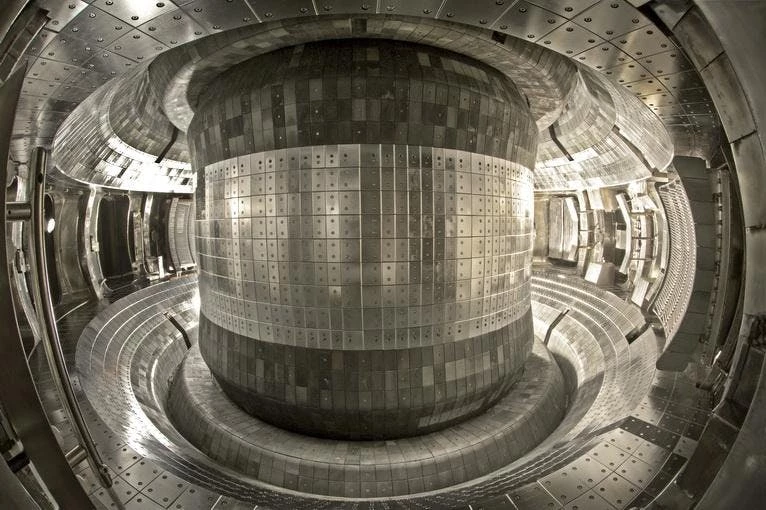The day of clean, limitless energy from nuclear fusion has taken another step closer thanks to China's Experimental Advanced Superconducting Tokamak (EAST). During a four-month experiment, the "Chinese artificial sun" reached a core plasma temperature of over 100 million degrees Celsius – that's more than six times hotter than the interior of the Sun – and a heating power of 10 MW, enabling the study of various aspects of practical nuclear fusion in the process.
Beginning operations in 2006, the Chinese designed and developed EAST is located at the Hefei Institutes of Physical Science of the Chinese Academy of Sciences (CASHIPS) and is billed as an open test facility for conducting steady-state operations and ITER-related physics research by both Chinese and international scientists. And, like many other fusion experiments, the ultimate goal is to produce a practical nuclear fusion power reactor.
EAST is a tokamak reactor, which consists of a metal torus or doughnut that is exhausted to a hard vacuum and then injected with hydrogen atoms. These atoms are then heated by a number of different methods to create a plasma that is then compressed using a series of powerful superconducting magnets.

Eventually, the plasma becomes so hot and so compressed that the conditions inside the reactor mimic those found inside the Sun, causing the hydrogen atoms to fuse, releasing tremendous amounts of energy. The hope is that eventually a reactor can be built where the fusion reaction is self-sustaining, and the reactor generates more energy than it consumes.
EAST produced its breakthrough temperatures and densities for around 10 seconds by combining four different heating methods to create the plasma and spark the fusion process. In this case, the methods were lower hybrid wave heating (oscillating the ions and electrons in the plasma), electron cyclotron wave heating (using a static magnetic field and a high-frequency electromagnetic field), ion cyclotron resonance heating (accelerating ions in a cyclotron), and neutral beam ion heating (injecting a beam of accelerated neutral particles into the plasma).

However, the purpose wasn't just to peg the meter, but to also study how to maintain plasma stability and equilibrium, how to confine and transport it, and how the plasma wall interacts with energetic particles. In addition, EAST is used as a demonstrator of how to use radio frequency wave-dominant heating, maintain a high level of plasma confinement with a high degree of purity, maintain magnetohydrodynamic stability, and how to exhaust heat using an water-cooled tungsten divertor.
CASHIPS says EAST is being used to explore how to maintain electron temperatures of over 100 million degrees over long periods to further knowledge and aid the development of advanced reactors like the International Thermonuclear Experimental Reactor (ITER) being built in France, the Chinese Fusion Engineering Test Reactor (CFETR), and the proposed DEMO (DEMOnstration Power Station). Achieving temperatures in excess of 100 million degrees Celsius – even if only for around 10 seconds – proves that it is possible to reach the temperatures required for nuclear fusion.
Source: CASHIPS






